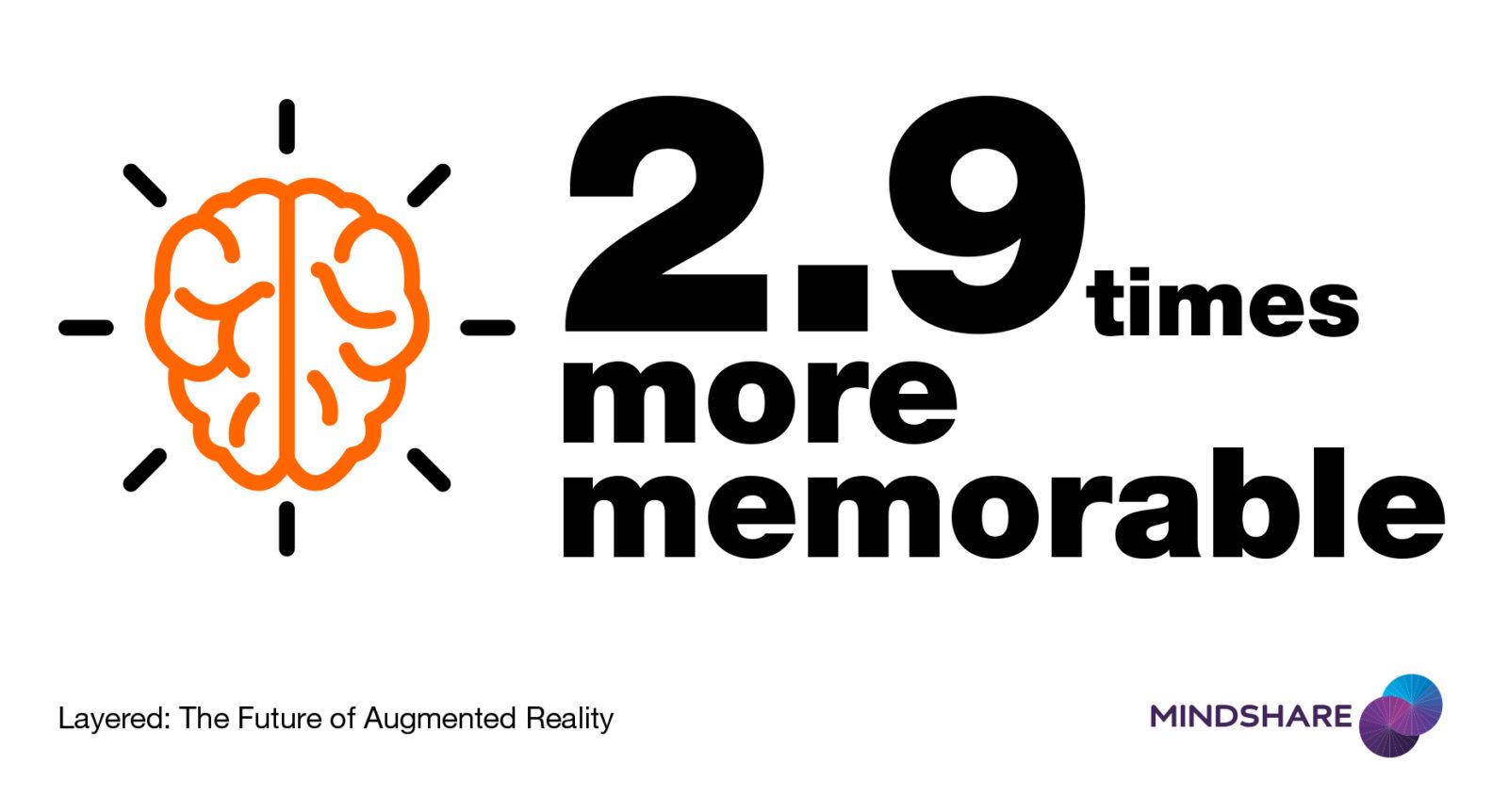
AR in retail: putting the consumer at the centre of the shopping experience
As leading exponents of AR in retail, we have seen first hand how the introduction of augmented reality into the shopping experience can build greater engagement.
Recently examples of our client’s AR advertisements have achieved dwell times in excess of 300 seconds – greater than TV, radio and OOH combined – this has understandably had a significant knock on effect on brand loyalty and engagement. So, we know AR in retail works!
But we wanted to dig deeper into the psychology behind the technology – to back up the ‘wow’ with the ‘why’.
Firstly, let’s look at the basics: consumer’s decision-making is driven by both emotional and cognitive considerations. As consumers we care about how we feel when shopping as much as we do about the rational aspects of buying something (i.e. need, price, availability). This seems like a good starting point when looking into the way that AR can influence the purchasing journey.
Let’s get emotional – how does AR make us feel?
Augmented reality makes shoppers feel good
Research has shown that the emotional impact of augmented reality is centred around the idea that AR technology has a unique ability to place us, the consumer, at the centre of the shopping experience. AR uses our physical location as its primary component and extends our version of reality with digital content.
In simple terms, AR enables us to create an enhanced version of ourselves by visualising and interacting with new products and brands in our own personal space (i.e. at home). This makes us feel good about ourselves which, in turn, makes us have positive feelings towards the product and brand.

3D interactivity adds the wow factor
According to recent research, it is clear that the addition of interactivity into AR is a key ingredient to making shopping fun and engaging which, in turn, is key to improving sales and building loyalty.
Further research into the neuroscience behind augmented reality by Mindshare has shown that “AR experiences deliver almost double (1.9 times) the levels of engagement compared to their non-AR equivalent.”

Adding interactivity (and particularly 3D based interactivity) to augmented reality can super-charge the shopping experience by giving us a sense of control and delivering an element of play. Both of these factors are proven to make us feel more positive about our experience.

At a time when Ecommerce and virtual retail (i.e. Vcommerce) is in the ascendancy, it is no coincidence that bricks and mortar retailers have shifted their focus to creating experiential retail environments.
The cognitive impact of augmented reality
AR experiences are more memorable
Just as with the emotional impact of augmented reality, the cognitive dimension is also influenced by placing us, the consumer, at the centre of the experience:
“Research has shown that information that refers to the consumer’s self is generally remembered longer and recalled more easily, due to the self’s long-term position in working memory.”
It is not rocket science to suggest that memorable experiences are valuable for companies looking to gain repeat business or brand loyalty; creating an experience that leaves a lasting impression positions you at the forefront of your consumer’s mind, whenever they decide to make that all important purchasing decision. AR has now proven that it works almost 3x harder than traditional non-AR media when it comes to being memorable, making it the perfect solution for brands ready to make their mark.

Search and evaluation is super-charged
The visual nature of augmented reality enables us to quickly and easily process product information (i.e. colour options, technical specifications), enhancing our ability to explore and assess products during the purchase journey. This is directly related to cognitive processes such as pattern perception and feature extraction.
Researchers also believe that the mind functions better when engaging in physical interaction, and so the ability for consumers to physically explore virtual products through AR enables them to make better decisions more easily.
Key takeaways
The advantages of AR in retail
Some of the latest academic research into the impact of AR on consumer behaviours has proven that there is finally a digital solution that has the potential to positively impact both the emotional and cognitive aspects of the purchase journey for consumers:
- AR is more engaging and memorable than other digital channels
- AR enables consumers to make better buying decisions at home
- AR is the natural bridge between digital (i.e. Ecommerce) and physical retail, offering retailers a key opportunity to create deeper engagement with customers to, ultimately, sell more.
Unlock the potential of AR for your brand
For more information on how to bring your brand and products to life with augmented reality, please call us on 01604 453 177 or drop us an email.

